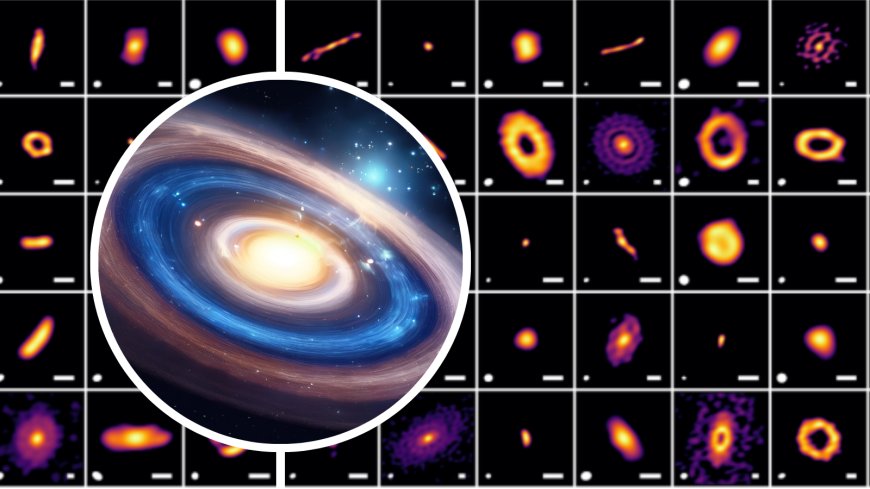Astronomers Spot Baby Planets Forming Around Young Stars in Nearby Stellar Nursery
A team of scientists discovered rings, spirals, and other structures in planet-forming clouds around infant stars in the Ophiuchus star-forming region. These findings suggest that stars and planets evolve together in gas and dust-rich environments, shedding light on the early stages of planetary system evolution.

Images of protoplanetary disks in the Ophiuchus star-forming region. Astronomers may have caught the first stages of planets being born around infant stars. The discovery came about when a team of scientists studied 78 planet-forming, flattened clouds of gas and dust, or 'protoplanetary disks,' in the Ophiuchus star-forming region. This stellar nursery, also known as the Rho Ophiuchi cloud complex, is located around 460 light-years from Earth, making it the closest star-forming region to our solar system.
The team discovered previously unseen rings, spirals, and other substructures in the swirling, plate-like planet-forming clouds around a number of stars just a few hundred thousand years old. The team's findings suggest stars and planets evolve together in environments that are rich in gas and dust.
Stars are born when overly dense regions in vast clouds of gas and dust called molecular clouds collapse under their own gravity. This collapse creates a protostar wrapped in a pre-natal envelope of material from which it continues to gather mass. The end result is a young star surrounded by a flattened disk of gas and dust within which planets can begin to form. When planets begin to take shape in these disks, their gravitational influence can gather or eject materials, giving rise to substructures in the protoplanetary disk.
Astronomers have been using the Atacama Large Millimeter/submillimeter Array (ALMA) to study the evolution of planetary systems. Two large programs conducted by ALMA, DSHARP and eDisk, have discovered intricate details of structures in protoplanetary disks. The investigation revealed 27 of the 78 examined disks had ring or spiral structures, 15 of which had never been seen before.
This implies that substructures form much earlier than previously thought, while such disks are still abundant with gas and dust. The team's research was published in The Publications of the Astronomical Society of Japan.
According to the source: Space.
What's Your Reaction?
 Like
0
Like
0
 Dislike
0
Dislike
0
 Love
0
Love
0
 Funny
0
Funny
0
 Angry
0
Angry
0
 Sad
0
Sad
0
 Wow
0
Wow
0






















































































































































